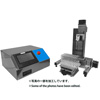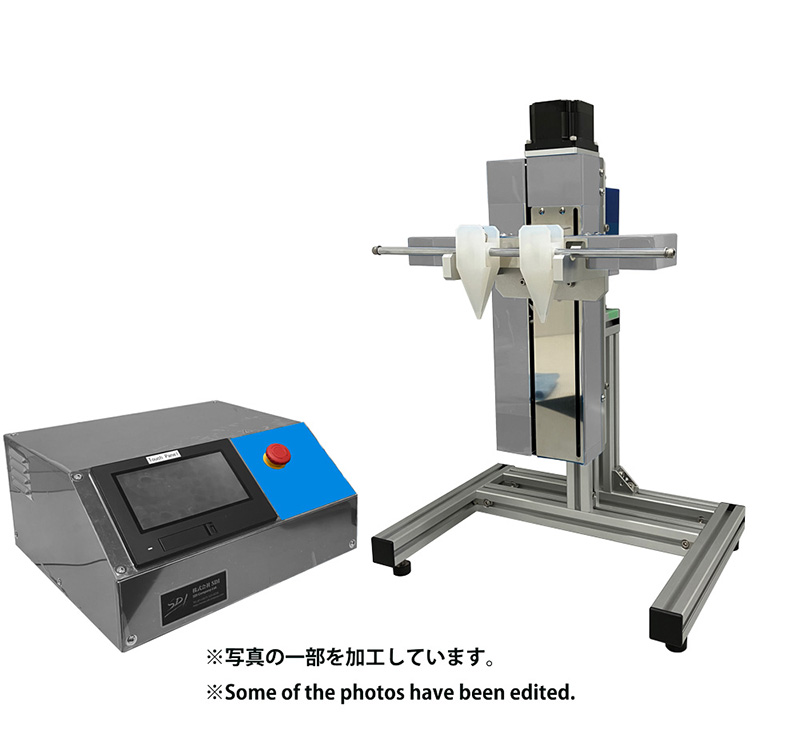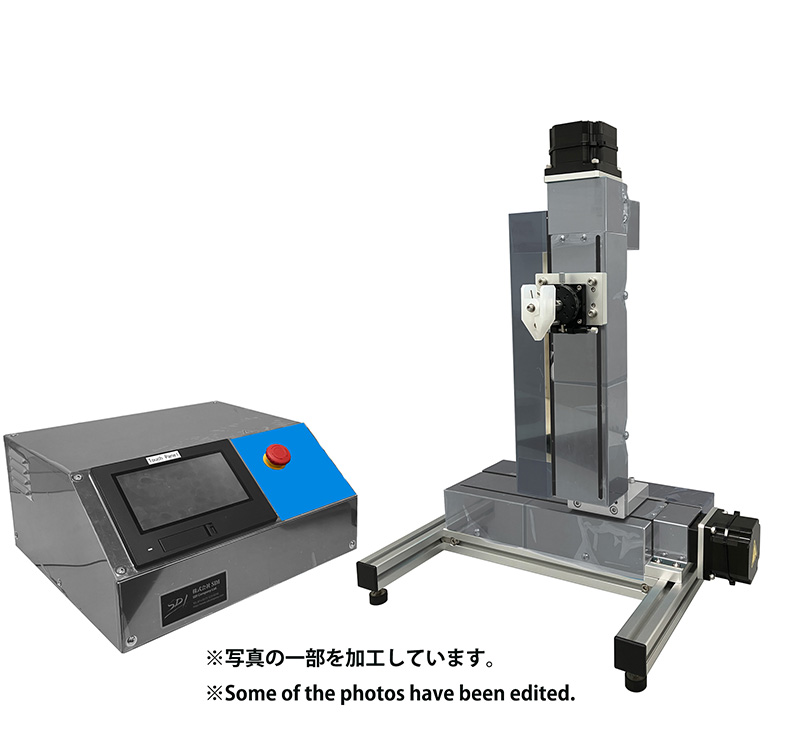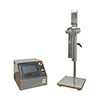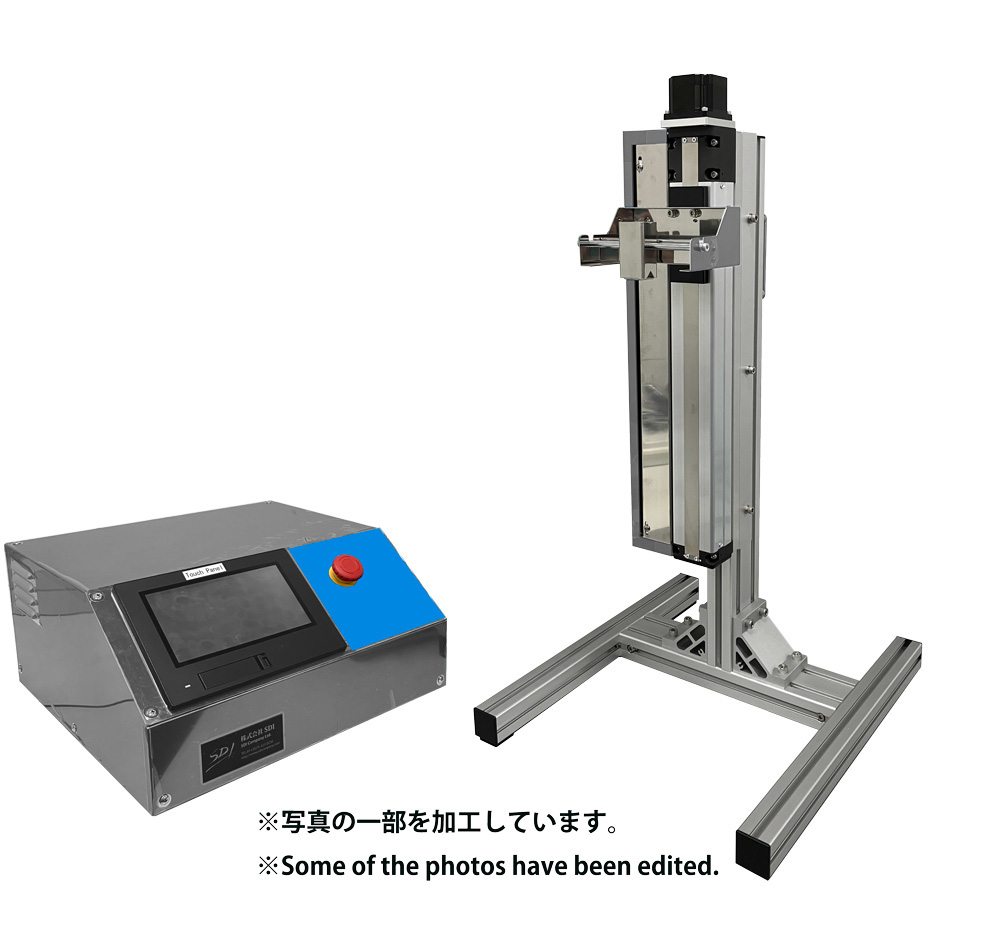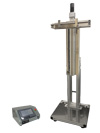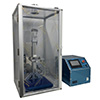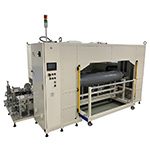Machine Translated by Google
Study on adding inorganic particles to nonwoven fabric using a micro dip coater
Japan Vilene Co., Ltd. Research Institute
1. the purpose
Nonwoven fabric has a large void and surface area, making it an excellent material for carrying functional powders. In this study, we used a dip coater to examine the application of inorganic particles to nonwoven fabric, and investigated the dip coating conditions.By observing samples with different conditions, we investigated the effect of processing conditions on the adhesion state of particles.
2. Experiment
The substrate used was an olefin nonwoven fabric manufactured by Japan Vilene Co., Ltd. The substrate was The inorganic particles with an average particle size of 4 ÿm and the binder were mixed at a concentration of 20%.An aqueous impregnation solution was prepared as follows.
For dip coating, we used the Microdip MD-0408, which allows precise constant speed pulling.
The sample was immersed in the impregnation solution and impregnated at lifting speeds of 0.1, 1, and 10 mm/sec.
The pulp was subjected to a heat treatment in an oven at 100° C. to produce a nonwoven fabric carrying inorganic particles.
3. Results and Discussion
As a result of impregnating the substrate, differences were observed between the pulling speed and the adhesion state of the particles.However, the particles were densely attached to the entire substrate (see the figure below).
Compared to the equipment we had been using, it was possible to perform uniform processing with less unevenness in impregnation.
It is believed that it will be possible to develop new materials that take advantage of the functionality of inorganic particles.
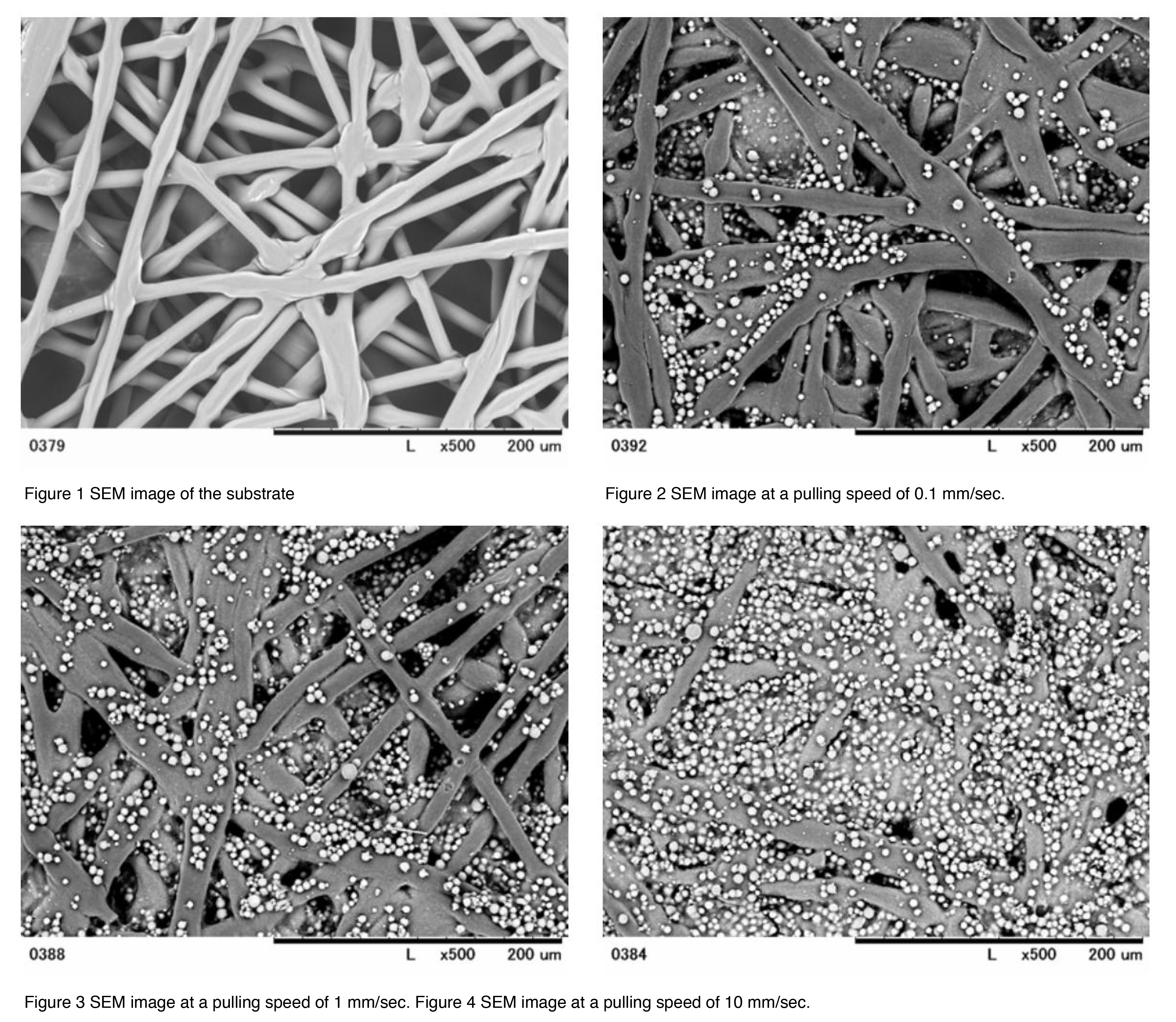
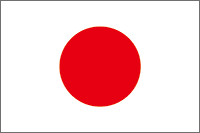 Japanease
Japanease English
English






